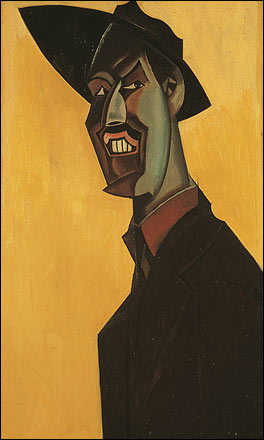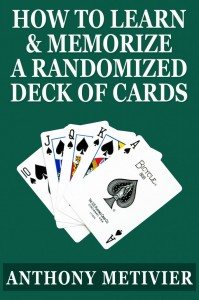Sun, 9 February 2014
Use coupon code “podcast” for a special introductory discount on your one time investment in this revolutionary system for memorizing foreign language vocabulary. +Anthony Metivier is the founder of the Magnetic Memory Method, a systematic, 21st Century approach to memorizing foreign language vocabulary in a way that is easy, elegant, effective and fun. The post MMMP 006: How To Master Your Highly Targeted Memorization Goals appeared first on Magnetic Memory Method - How to Memorize With A Memory Palace. |
Mon, 25 November 2013
|
Sun, 8 September 2013
Memorizing Thousands Of Words Is Easier Than You Think!
Here’s a recent question about memorizing 3000 words. Ultimately, it sounds like this person wants to make the Magnetic Memory Method more complex than it needs to be. See what you think: Here’s what he writes:
Here is my reply: Thanks for your message! First of all, your English is very good.
How To Create Thousands Of Memory Palace Stations Using Imaginary BookcasesBut here’s the deal: Once you are more practiced with the basics of the Magnetic Memory Method, you can do very interesting things within rooms. Imagine, for example, having a bookcase in a room and placing 5-10 words on each shelf. You can work from top to bottom or bottom to top. Every room can have a real or imagined bookcase. Depending on your skill level, your rooms can have multiple bookcases. Let’s say that you decide upon having 10 bookcases per room in a 10 room memory palace. If each bookcase has 10 levels and you store just one word per level, then you have a room with 100 words in it, with 1000 words total when you add all the rooms together in just that one Memory Palace. Get Started NowYou can get started on a memorization project like this today merely by picking a room that you are very familiar with and mentally building and installing a beautiful bookcase. For the sake of this example, let’s say the bookcase has 10 shelves. Decide in advance if you will memorize from the top to the bottom, or the bottom to the top. I would go from the top to bottom myself, but go with whatever works for you. The point is to move in a linear progression without skipping shelves. As ever, you don’t want to cross your own path or somehow trap yourself as you move from station to station and word to word As a beginner, help yourself out by picking ten words that proceed in alphabetical order, i.e. ten words that start with “an,” or share some other similarity. That way, you’ve eliminated a detail you have to remember because you already know how the next word will start. It’s also good to have a key image connected with a “bridging figure.” With “an,” for example, you could have Annikin Skywalker, or Anne of Green Gables or anything concrete and visual that you associate with “an.” Now as it happens, I’ve just been working on a portion of my ‘A’ Memory Palace devoted to “an” words in German (or words that change meaning when “an” is added to them). Keep An Eye Out For Memorable WildlifeOne of my ‘A’ Memory Palace starts in a home my mother used to live in down a forest lane. But by now, I’ve got so many items, I’ve wandered out of the house and have made it halfway to town along a 30km road. For the purposes of this example, I’m going to place an imaginary bookcase right in front of the peacock farm (yes, there really is a peacock farm and you have to slow down when driving past it because it is part of a school zone). Now, to set myself up for even greater ease and success, I’m going to focus on words that start with “an” followed by “b.” Not every language lets you do this, but German does, so it’s important to capitalize on it. Whatever you’re working on, there will almost always be some memorization advantage you can exploit if you keep your eyes open for opportunities. On the top shelf of this bookcase, I’m going to place the word “anbaggern.” It means “to flirt.” To memorize this word, I see Annikin Skywalker flirting with a peacock who is shoving a plastic bag into an urn. I see this image big, bright and colorful in my mind and the action of forcing the bag into the urn is very exaggerated. “Anbaggern.” Got it. One shelf down, I place “anbahnen.” This word has a somewhat similar meaning, in that it indicates initiating something. This move is tricky, because it’s more conceptual than concrete, but the first thing that comes to mind is Annikin Skywalker feverishly “initiating” the launch of a peacock into outer space, its mouth filled with bon-bons. Again: Big, Bright, Colorful, Exaggerated Action!Aller guten Dinge sind drei, say the Germans (all good things are three), so I’ll give you one more example before I go. One shelf down, I place “anbetteln.” This means to beg. Now I see Annikin Skywalker kneeling before a bed, begging the peacock he first flirted with and then tried to launch into outer space to let him into the bed so he can get some rest after a long day of being a former hero who fell so badly from grace. And he is really begging in a larger-than-life way, tears and everything. I know I’ve been using a lot of German examples here. If you’re into the language, you might want to check out a discussion I had with a friend. You can hear us chatting in Berlin on 16 Heavy Metal Memory Methods For German and Music. From there, I would continue on down to the bottom of the shelf and start again on the second one, or move to the next room, etc. Preparation Is The Most Magical Potion In The WorldIt’s important, however, to take time before getting started to predetermine and prepare the way in advance. In this case, I decided in advance to do only ten words, so I only made one book case. But if I were sitting down for a memorization session and wanted to do a hundred, then I would want to have spent time in preparation for this. There’s nothing worse than being on a roll and then having to pause to build or identify the next station you want to use. Success comes from planning, and as they say in the self-help circles, failing to plan is planning to fail. Because planning is so important, I created a memory training program called The Magnetic Memory Method Masterplan. One last thing:
For more information on memorizing cards check out: System for Remembering Cards: 13 Reasons You Should Have One The Secret Of The Tiniest Memory Palace In The WorldThis pack of cards on my desk is an entirely imaginary “location,” of course, but it’s the tiniest little deck of cards and it is packed full of information. In other words, you don’t have to use big bookshelves that take up entire rooms. You could have a deck of cards. Inside this deck, imagine an entire universe filled with space for placing the information you want to memorize. Then imagine having a deck of cards in each and every room, or a deck of cards on each and every shelf in each and every room … Yes, I think it is very easy to come up with thousands of locations in a Memory Palace collection, if not hundreds of thousands. It just takes practice, and of course preparation and predetermination in combination with the basic principles of imagination and action. Throw in some relaxation before you get started using these memory techniques and you will never find the ceiling to what you can achieve. Until next time, make sure to teach someone what you have learned about memorization. It’s the best way to deepen your own understanding and to help make the world a better place. The more we remember, the more we can remember, and the more we learn, the more we can learn. A Further Resource For Boosting Your Memory How to Keep A Journal And Remember More Remember Names At Events: Quick Start Guide The post What If I Want To Memorize 3000 Words? Best Memory Techniques? appeared first on Magnetic Memory Method - How to Memorize With A Memory Palace.
Direct download: What_If_I_Wanted_To_Memorize_3000_Words.mp3
Category:Improve Memory Q&A -- posted at: 3:11pm EDT |
The Magnetic Memory Method Podcast (Improve Memory Q&A)

Categories
generalMemory Improvement Tools
Memory Method Tips
Brain Exercises for Memory Improvement
Memory Improvement Case Studies
Podcast
Guest Post
Memory Palace Tactics
Practical Memory Techniques
Uncategorized
Improve Memory Q&A
Archives
AprilMarch
February
January
December
November
October
September
August
July
June
May
April
March
February
January
December
November
October
September
August
July
June
May
April
March
February
January
December
November
October
September
August
July
June
May
April
March
February
January
December
November
October
September
August
July
June
May
April
March
February
January
December
November
October
September
August
June
May
April
March
February
January
December
November
October
September
August
July
June
May
April
March
February
January
December
November
October
September
August
July
June
May
April
March
February
January
December
November
October
September
August
July
June
May
April
March
February
January
December
November
October
September
August
July
June
May
April
March
February
January
December
November
October
September
August
July
June
May
April
March
February
January
December
November
September
| S | M | T | W | T | F | S |
|---|---|---|---|---|---|---|
| 1 | 2 | 3 | 4 | 5 | 6 | |
| 7 | 8 | 9 | 10 | 11 | 12 | 13 |
| 14 | 15 | 16 | 17 | 18 | 19 | 20 |
| 21 | 22 | 23 | 24 | 25 | 26 | 27 |
| 28 | 29 | 30 | ||||
Syndication

 In Episode Six of The Magnetic Memory Method Podcast, you’ll learn the number one way to discover the words you’ll need in order to engage in specifically targeted conversations in your dream language when using mnemonics to assist your language learning experience.
In Episode Six of The Magnetic Memory Method Podcast, you’ll learn the number one way to discover the words you’ll need in order to engage in specifically targeted conversations in your dream language when using mnemonics to assist your language learning experience. Would You Like A Memory Exercise That Will Give You Outstanding Mental Fitness In Just Minutes A Day ?
Would You Like A Memory Exercise That Will Give You Outstanding Mental Fitness In Just Minutes A Day ? 



